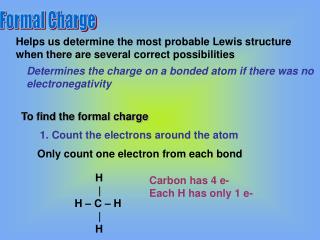

One oxygen atom must have a double bond to carbon to complete the octet on the central atom. The carbonate anion, provides a second example of resonance: It has some characteristics in common with its resonance forms, but the resonance forms themselves are convenient, imaginary images (like the unicorn and the dragon). Like a rhinoceros, it is a real entity that experimental evidence has shown to exist. Just as a rhinoceros is neither a dragon sometimes nor a unicorn at other times, a resonance hybrid is neither of its resonance forms at any given time. A medieval traveler, having never before seen a rhinoceros, described it as a hybrid of a dragon and a unicorn, because it had many properties in common with both. George Wheland, one of the pioneers of resonance theory, used a historical analogy to describe the relationship between resonance forms and resonance hybrids. It does not fluctuate between resonance forms rather, the actual electronic structure is always the average of that shown by all resonance forms. We should remember that a molecule described as a resonance hybrid never possesses an electronic structure described by either resonance form. Thus, the electronic structure of the ion is shown as: A double-headed arrow between Lewis structures indicates that they are resonance forms. The actual electronic structure of the molecule (the average of the resonance forms) is called a resonance hybrid of the individual resonance forms. We call the individual Lewis structures resonance forms. The actual distribution of electrons in each of the nitrogen-oxygen bonds in is the average of a double bond and a single bond. Instead, we use the concept of resonance: if two or more Lewis structures with the same arrangement of atoms can be written for a molecule or ion, the actual distribution of electrons is an average of that shown by the various Lewis structures. It is not possible to write a single Lewis structure for in which nitrogen has an octet and both bonds are equivalent. Experiments show, however, that both N–O bonds in have the same strength and length, and are identical in all other properties. A double bond between two atoms is shorter (and stronger) than a single bond between the same two atoms. If nitrite ions do indeed contain a single and a double bond, we would expect for the two bond lengths to be different. The electrons involved in the N–O double bond, however, are in different positions: You may have noticed that the nitrite anion in Example 3 can have two possible structures with the atoms in the same positions. We can draw three possibilities for the structure: carbon in the center and double bonds, carbon in the center with a single and triple bond, and oxygen in the center with double bonds:

We know from our previous discussion that the less electronegative atom typically occupies the central position, but formal charges allow us to understand why this occurs. To see how these guidelines apply, let us consider some possible structures for carbon dioxide, CO 2.

In many cases, following the steps for writing Lewis structures may lead to more than one possible molecular structure-different multiple bond and lone-pair electron placements or different arrangements of atoms, for instance. The arrangement of atoms in a molecule or ion is called its molecular structure. Using Formal Charge to Predict Molecular Structure In cases where there MUST be positive or negative formal charges on various atoms, the most stable structures generally have negative formal charges on the more electronegative atoms and positive formal charges on the less electronegative atoms.\) Typically, the structure with the most formal charges of zero on atoms is the more stable Lewis structure.


 0 kommentar(er)
0 kommentar(er)
